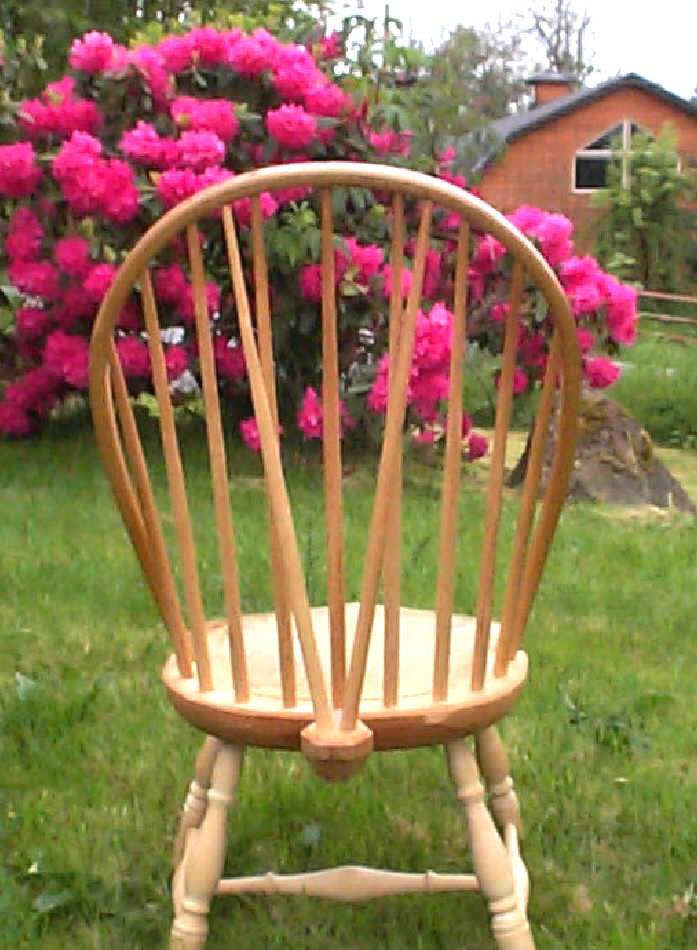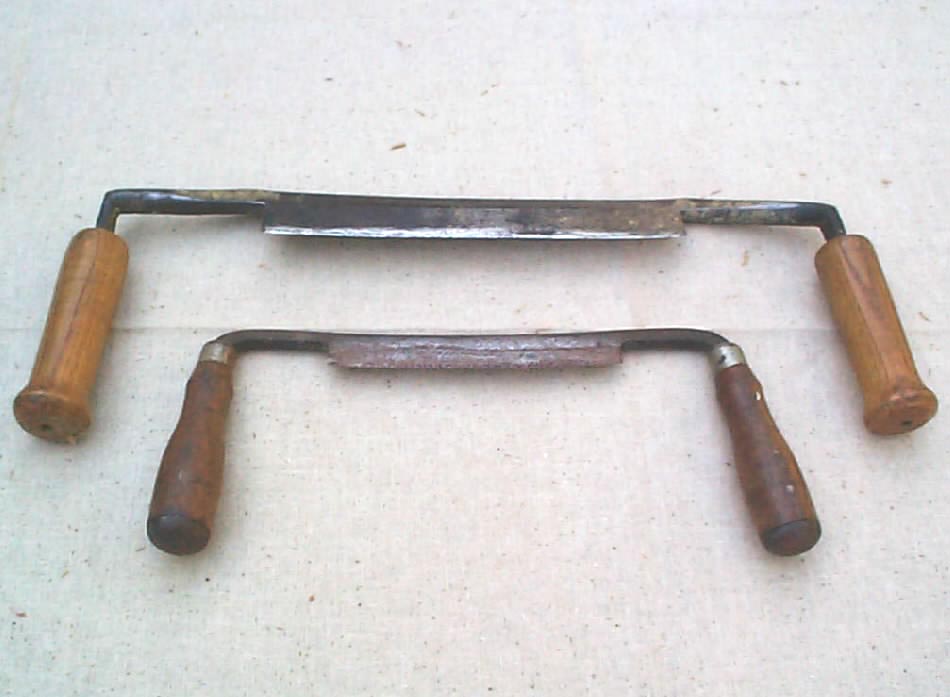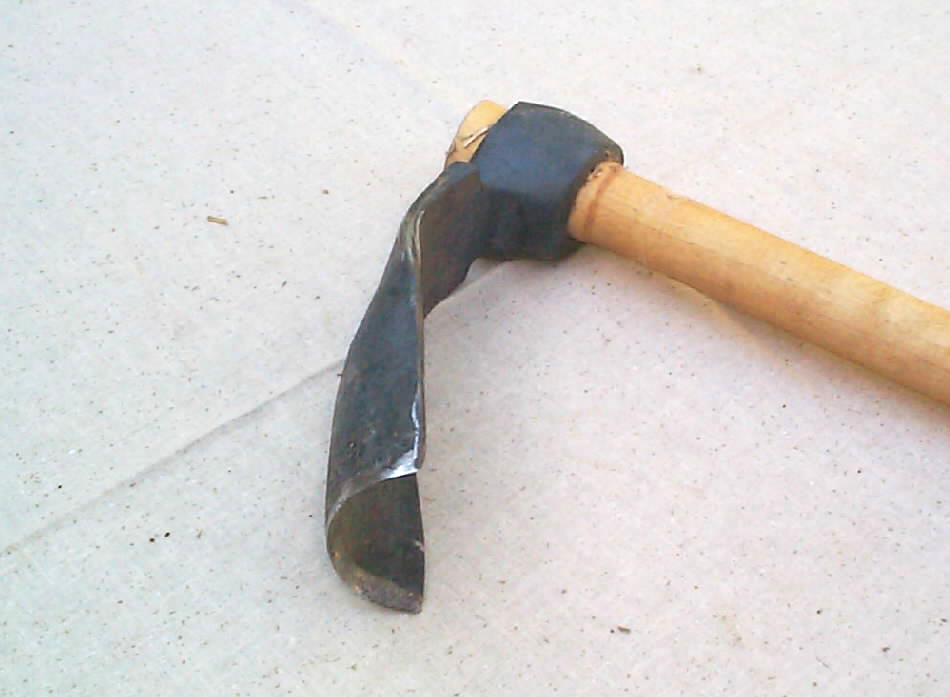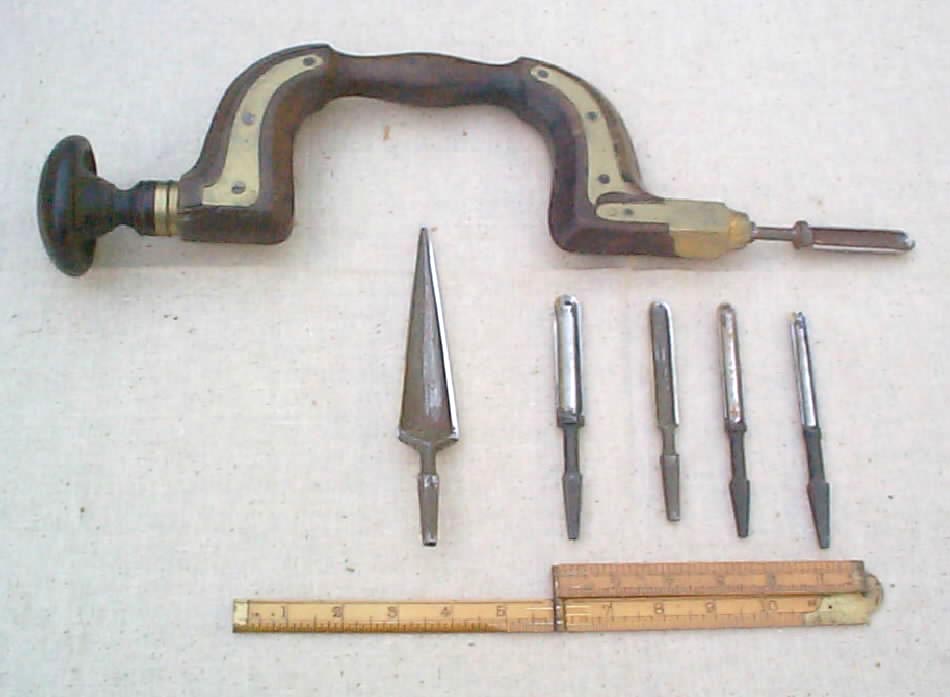
Speaking of stronger, let me explain why Windsors, made in the traditional manner, are much superior to mass produced chairs. The legs, stretchers, spindles and bow are all riven from the log. What this means is the log is crosscut to the approximent length of these parts and then is split, following the grain into squares(billets) and then rounded either on the lathe or by hand in the case of the spindles. Being that these parts are riven from the log, each of these parts will not have grain run-out like modern chairs with parts made with no real consideration for grain run-out or longevity either.
Then of course if you buy one of my Windsors you will have the satisfaction of knowing the person that made it, perhaps even custom make it for you.
Click on the little Windsor to return to Home or scroll down for more about Windsor chairmaking tools and lore.
 |
Drawknives. The chairmaker uses the drawknife for whitling the spindles and the stretchers. The drawknife is used for roughing these parts and then they are finished up with the spokeshave. Drawknives are also used by sparmakers and coopers. A cooper is a craftman who makes wooden barrels. Come back sometime and I'll show you some of my coopering and other green woodworking endeavors. |
 |
Gutter-adze. The gutter-adze is used by the chairmaker to roughout the seat bottom. He can remove large quantities of wood in a small amount of time. The chairmaker stands on the chairseat and swings the adze between his feet. Get out the heavy duty shoes if you try this at home. |
 |
Brace and spoonbits. I'll bet you recognized the brace for drilling but have you ever seen a spoon bit? Spoonbits work really well for the chairmaker because they don't need a leadscrew like modern boring bits. With no leadscrew they do not make a nasty hole on the other side of the leg when drilling a stretcher socket. I've seen some mass produced, imported neo-windsors with this extra hole I'm talking about. Very tacky indeed! The spoonbit also allows the chairmaker to start drilling perpendicular to the work and then gradually change the angle as he goes. There are a lot of angled holes to be drilled which takes a little practice to get the hang of. Click on the little Windsor to return to home page |
